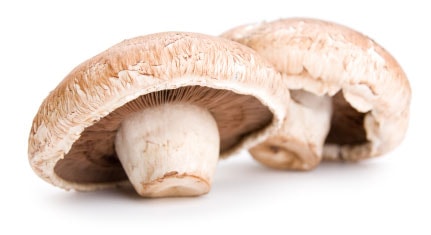
Written By: Sofia Layarda, MPH
Title: Master of Public Health
Alumni: University of California, Berkeley
Last Updated on:

If you have been ignoring button mushrooms in favor of the more exotic ones such as shiitake, maitake, and reishi, consider this: research shows that the good old button mushroom contains just as much, if not more, antioxidant activity as its sexier-sounding counterparts. The three most common button mushrooms are the ubiquitous white, the brown or tan-colored crimini or cremini, and the portabella or portobello. The crimini and portobello are one and the same; in other words, crimini is an “immature” or “baby” portobello, while portobello is sometimes called an overgrown crimini mushroom.
Although often found with vegetables in the grocery case, mushrooms actually belong to the kingdom Fungi – consisting of organisms without chlorophyll or vascular tissue, and including things as diverse as yeasts and molds. While most of the mushrooms consumed in this country are farmed or cultivated, many grow wild throughout the world. However, some mushrooms are poisonous, so avoid gathering and eating them in the wild without proper guidance.
Table of Contents

In addition to being low in fat and high in fiber, portobello mushrooms pack a serious nutritional punch. For example, they are an excellent source of selenium (very important mineral for optimal antioxidant activity), many of the B vitamins, and potassium. In addition, their polysaccharide and beta-glucan components exhibit anti-cancer properties.
When buying portobello mushrooms, look for smooth firm caps without wet slimy patches. Store them in the refrigerator inside a loosely closed paper bag or wrap them inside a damp cloth.
Alumni: University of California, Berkeley – Sofia believes in bringing back fun and pleasure into everyday eating. She loves cooking, and is constantly experimenting with ingredients, creating recipes and trying them out on family and friends. Her latest interest lies in finding realistic and practical ways of environmentally-friendly food/eating habits.
antioxidant, beta glucan, crimini, grocery aisle, healthy every month, mushrooms, polysaccharide, portabella, portobello mushroom, vegetables
Prepared Portobello mushroom i cup fresh from farm. fry pan cook with 1 table spoon unsalted butter in low heat with lid covered. for 120 seconds. Sprinkled black pepper for taste, combined my meal with one toast fried egg and walnut. A glass of water. Wish i ould attach picture.